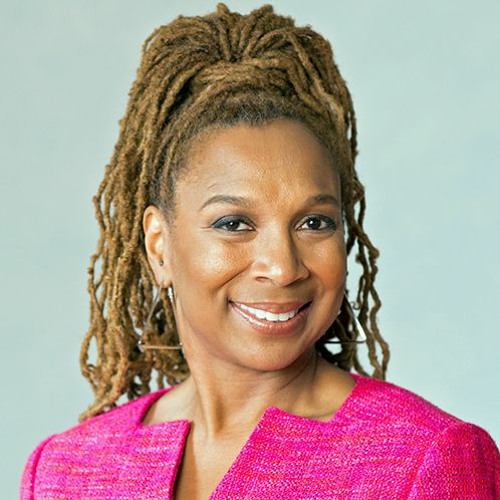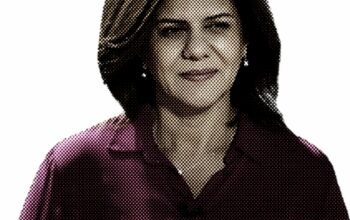Exploring the word, its meaning, and its impact on the world. We live in an exceptional historical moment, characterised by so much violence, conflict, and social challenges but, for the first time, also characterised by awareness, unity, and desire for change. In this climate, the word Intersectionality is becoming more and more frequent in so many contexts: there are plenty of articles about it, videos, podcasts, books, interviews; young activists talk about it in tweets and posts on their social media, the conversation about it is getting bigger and bigger. But what does Intersectionality really mean? And why does this word have such an important impact?. The answer is quite simple. Intersectionality is the key to understanding how discrimination and social injustice work. And understanding is the first step we can take towards actual change.
We owe the introduction of this ground-breaking concept to American civil rights advocate and UCLA and Columbia law professor Kimberlé Crenshaw. The starting point of her theory is that “All inequality is not created equal” and for many people the reasons of injustice overlap and operate together. Crenshaw introduced the concept of Intersectionality for the first time in 1989 in her paper Demarginalizing the Intersection of Race and Sex. The paper analysed several legal cases with shared discrimination episodes experienced by black women in the United States. The emblematic case is the story of Emma DeGraffenreid, an African American woman whose claim of race and gender discrimination against a local car manufacturing plant got dismissed by a judge. Emma had applied for a job at the plant, but when she was not hired, she believed it was because she was a black woman. The judge, however, dismissed her with the argument that the employer hired both black people and women. But the real problem was that the manufacturer only hired black man for industrial jobs, and white women for office jobs. The reason she did not earn her job was because she was a black woman. So, Emma found herself in the middle, at the “Intersection”, of two types of discrimination, one about gender, and one about race, with no one to save her from being run over by those powerful forces. Crenshaw’s paper gives plenty of other examples like Emma’s. Her story is only one of many stories of women left standing at the “Intersection”.
The concept of Intersectionality revolves around the idea that “many of our social justice problems like racism and sexism are often overlapping, creating multiple levels of social injustice”. In our daily life, all forms of discrimination, such as racism, xenophobia, homophobia, transphobia, misogyny, classism, and so on, do not happen separately, but they intertwine generating unique life experiences for different people. Crenshaw’s analysis was a turning point in the approach to social problems, as it gave us the means to better understand the daily struggles of many people. This is the reason no social problem can be solved or no battle for civil rights can be won without an intersectional approach. For example, Feminism without an intersectional approach would mean leaving out a whole portion of women to their own battles with other types of discrimination that they experience in their daily life. At the very beginning of the Feminist movement claimed to stand for equality for women but considered almost exclusively white women. This is also the reason why the concept of Intersectionality developed within black feminism studies, thanks to incredible minds such as Patricia Hill Collins, Deborah King, Frances Beal, the Combahee River Collective, in addition to the already mentioned Kimberlé Crenshaw.
An Intersectional approach can be adopted in every aspect of our life. It can be adopted at work to create an inclusive environment that is comfortable for each one of its participants. It can be adopted in arts to make sure that every minority is equally represented. And it can be adopted in our daily life to help us have more meaningful interactions with the people surrounding us.
Adopting an Intersectional approach means not only acknowledging that people may have different stories than ours but also understanding where we stand. When asked about what a person can do to help achieve equality in an interview with TIME, Crenshaw’s answer was: “Self-interrogation is a good place to start. If you see inequality as a ‘them’ problem or ‘unfortunate other’ problem, that is a problem. Being able to attend to not just unfair exclusion but also, frankly, unearned inclusion is part of the equality gambit. We’ve got to be open to looking at all of the ways our systems reproduce these inequalities, and that includes the privileges as well as the harms”.
It is important to stress that privilege most of the times is not earned, but it can just be a matter of sheer luck. It is just luck sometimes being born in a wealthy family, or in a certain country, or with a certain skin colour rather than another, or of a certain gender or sexual orientation. Learning that we may be in a position of privilege just because of a combination of lucky factors is the first step to have an intersectional approach to our daily lives. Sometimes it may seem difficult to understand that the same world we all live in might treat other people differently. It might not be easy to put ourselves in someone else’s shoes and try to imagine the challenges that they had to go through just because their combination of factors was not as lucky as ours. Things that we might take for granted for many people might be hard to earn, just because of the position they have on the privilege scale. For these reasons, once we acknowledge our position of privilege, it is vital to take a step back and open our ears, minds, and hearts to the stories of those people who were left standing at the “intersection” between several roads.
Francesca Cuomo
References:
https://www.youtube.com/watch?v=ViDtnfQ9FHc (last access on 15/03/2022).
https://www.ted.com/talks/kimberle_crenshaw_the_urgency_of_intersectionality/transcript (last access on 15/03/2022).
https://www.bossy.it/nel-mondo-e-nel-tempo-2-4-femministe-da-conoscere.html (last access on 15/03/2022).
https://www.bossy.it/femminismo-intersezionale.html (last access on 15/03/2022).
https://time.com/5786710/kimberle-crenshaw-intersectionality/ (last access on 17/03/2022).
https://www.unwomen.org/en/news/stories/2020/6/explainer-intersectional-feminism-what-it-means-and-why-it-matters#:~:text=An%20intersectional%20approach%20shows%20the,class%2C%20sexuality%20or%20immigrant%20status (last access on 17/03/2022).
https://it.lifeinflux.com/what-is-intersectionality (last access on 17/03/2022).



